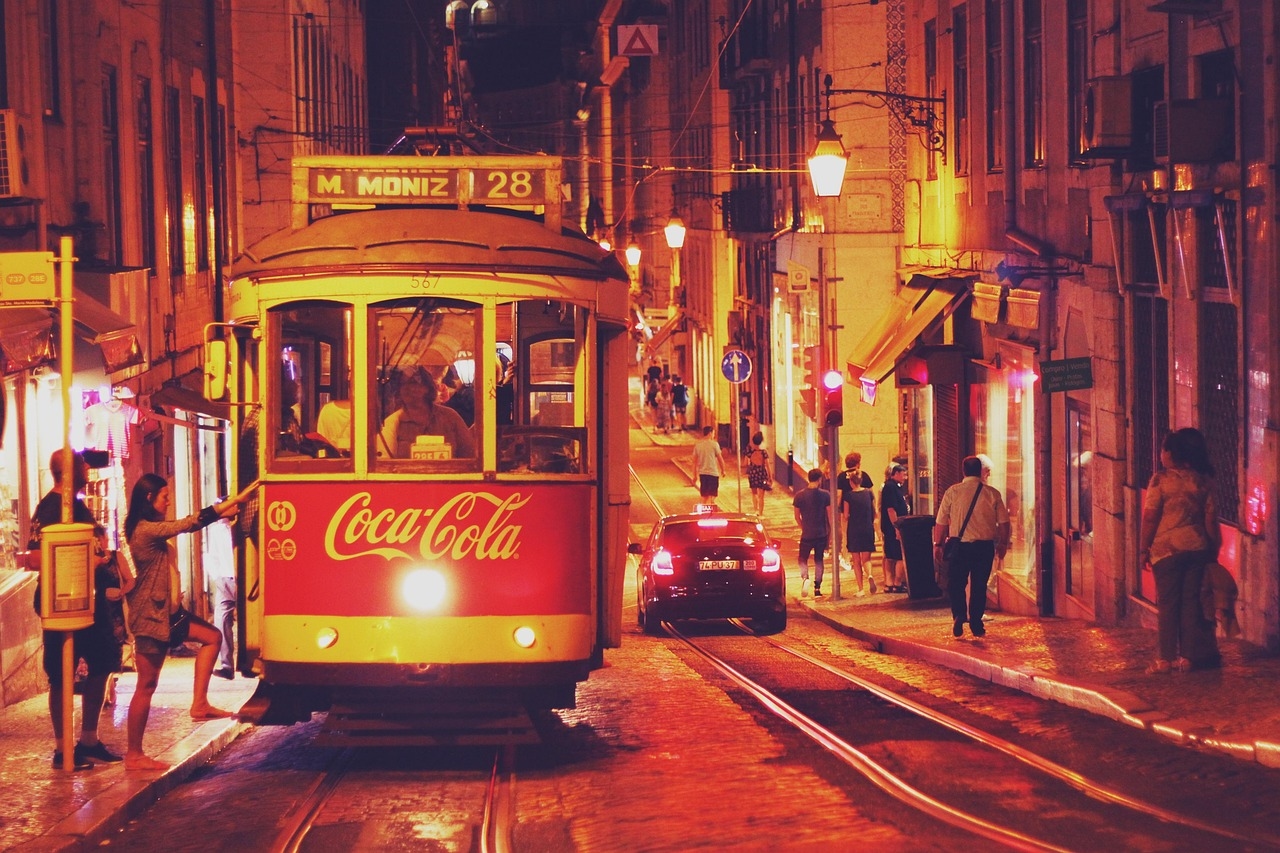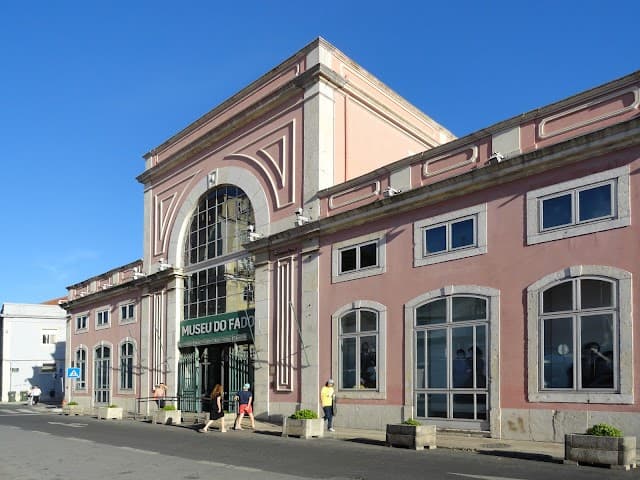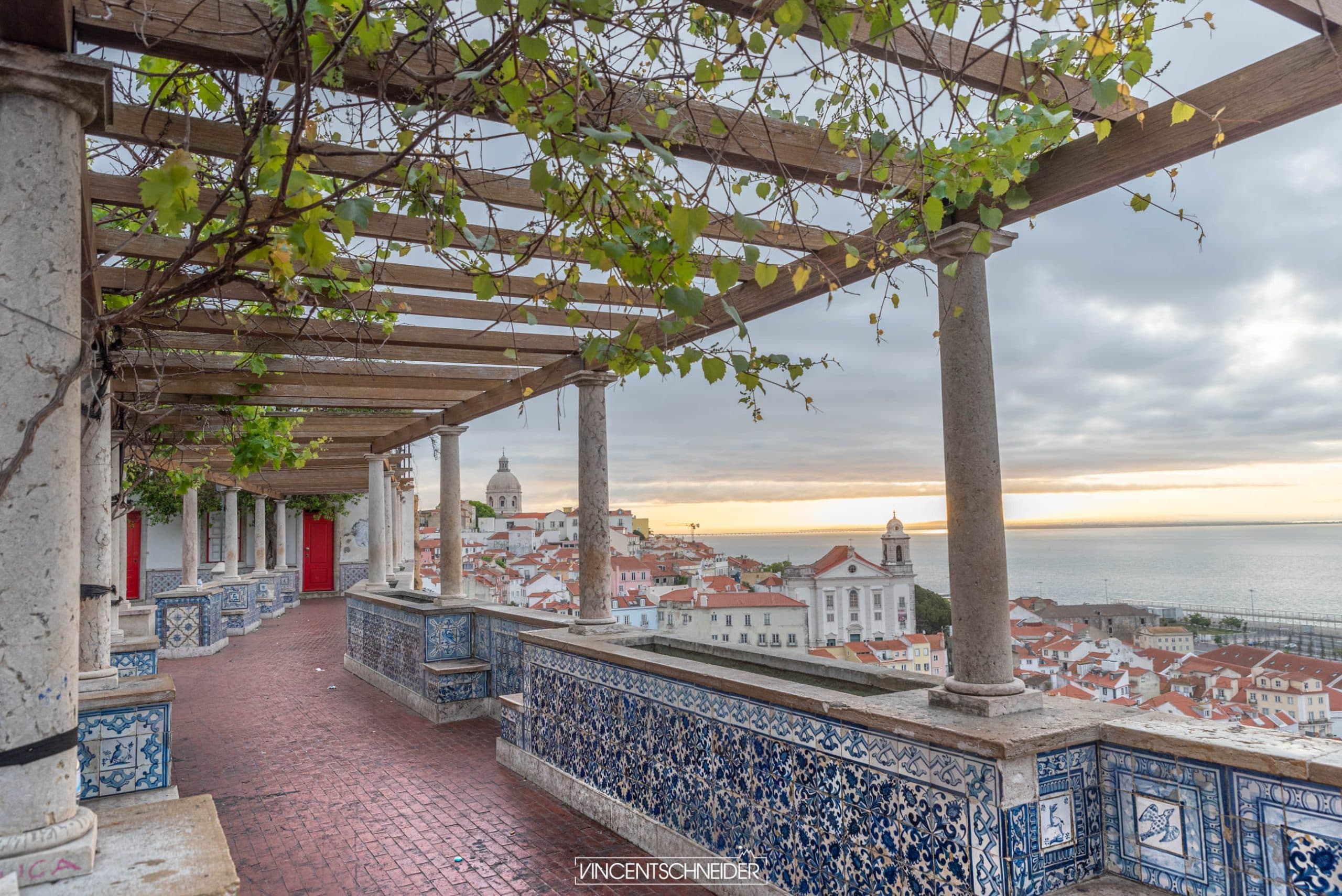
Lisbon is a city of contrasts. During the day, its cobbled streets and tiled façades invite long walks under the sunlight that has inspired painters and poets for centuries. But when the sun goes down, the city takes on a completely new identity. The pace quickens, music fills the air, and neighborhoods transform into vibrant hubs of culture and entertainment.
The Lisbon nightlife is often considered one of the most exciting in Europe. It blends the melancholic depth of fado, the convivial atmosphere of lively bars, and the pulsating energy of modern clubs. Whether you are looking for a traditional evening of music and wine or an unforgettable night of dancing until sunrise, Lisbon has it all.
Fado: the soul of Lisbon after dark
Alfama and Mouraria: the cradle of fado
No introduction to Lisbon’s nightlife would be complete without mentioning fado. Born in the working-class neighborhoods of Alfama and Mouraria, fado is more than just music — it is the sound of Lisbon’s soul.
In a typical fado house, the lights dim, conversations fade, and silence falls as the first chords of the Portuguese guitar echo through the room. The singer’s voice, full of saudade — a uniquely Portuguese sense of longing — holds the audience spellbound.
Places like the Clube de Fado near the cathedral and the Tasca do Chico in Bairro Alto are among the most authentic venues where you can hear both established stars and rising talents.
A tradition that evolves
Fado is not frozen in time. Today, younger artists bring fresh influences from jazz, world music, and even pop, expanding its reach without losing its essence. This evolution has allowed fado to remain relevant, connecting with new generations while continuing to move locals and visitors alike.
Bars: conviviality and variety
Bairro Alto: Lisbon’s bohemian heart
The Bairro Alto neighborhood is perhaps the most famous spot for a night out in Lisbon. By day, it looks quiet, with small shops and cafés tucked into narrow streets. At night, it transforms into a massive open-air bar.
Hundreds of people gather in the streets with drinks in hand, moving between tiny establishments that each offer a different vibe — from dive bars playing rock classics to cocktail lounges serving inventive mixes. The energy is youthful, inclusive, and always buzzing.

Cais do Sodré: from sailors to trendsetters
A few decades ago, Cais do Sodré had a reputation for rough sailors, shady taverns, and brothels. Today, it is one of Lisbon’s hottest nightlife districts. The transformation is symbolized by the famous Pink Street (Rua Nova do Carvalho), where the pavement itself is painted bright pink.
The most emblematic venue here is Pensão Amor, a former brothel reinvented as a quirky bar full of velvet, mirrors, and burlesque shows. Around it, dozens of other bars and clubs create a vibrant and eclectic scene that attracts both locals and tourists.
Rooftops: Lisbon from above
Lisbon’s hills give it an advantage: rooftop bars with spectacular views. The Park Bar, perched on top of a parking garage in Santa Catarina, is known for its relaxed vibe and panoramic views of the 25 de Abril Bridge. The Topo Chiado, more sophisticated, offers cocktails and a stunning view of the castle and Carmo ruins. Both are perfect for watching the sunset before diving into the night.
Clubs: dancing until dawn
Lux Frágil: the legendary club
When people talk about Lisbon nightlife, one name comes up again and again: Lux Frágil. Co-owned by actor John Malkovich, this riverside club is an institution.
It features several floors with different atmospheres: a frenetic dance floor, stylish lounges, and a rooftop terrace where the sunrise over the Tagus provides a magical ending to the night. Known for its cutting-edge electronic music and international DJs, Lux is the place for those who want to experience Lisbon’s party scene at its peak.
Musicbox and underground vibes
If Lux is the mainstream temple, Musicbox represents the underground spirit. Located under the railway arches of Cais do Sodré, it is smaller but has an intimate atmosphere ideal for live concerts and alternative DJ sets.
For fans of house and techno, the Kremlin in Santos remains a historic name. Open since the late 1980s, it has kept its reputation as one of the best spots for electronic music in the city.
Other nighttime experiences
Live concerts and performances
Beyond bars and clubs, Lisbon has a thriving live music and cultural scene. Venues like the Coliseu dos Recreios and the Teatro Tivoli BBVA host big concerts, while smaller places like Casa Independente in Intendente offer eclectic nights mixing music, dance, and art.
Summer festivals
During the summer months, Lisbon becomes a capital of festivals. Events like NOS Alive and Super Bock Super Rock attract world-famous bands and transform the city’s nights into marathon celebrations of music and culture.
Late-night food
One of the joys of Lisbon nightlife is that you never have to end the night hungry. Bakeries and cafés often stay open late into the night — or early into the morning. It’s not unusual to end a party with a freshly baked croissant or another pastel de nata.
Practical tips for a night out in Lisbon
- Transport: the metro closes around 1 a.m., so plan your return with taxis, Uber, or Bolt.
- Safety: Lisbon is relatively safe, but like in any busy nightlife area, keep an eye on your belongings.
- Budget: going out in Lisbon is generally cheaper than in most Western European capitals. Drinks and entry fees are reasonable.
- Timing: Lisbon nights start late. Bars fill up around 11 p.m., and clubs only get busy after 2 a.m.
Conclusion
Lisbon’s nightlife is a world of its own. It mirrors the city’s contrasts: melancholic yet joyful, traditional yet modern, intimate yet exuberant. In one night, you can go from listening to soulful fado in a centuries-old tavern to sipping cocktails on a rooftop with breathtaking views, and end up dancing until sunrise in one of Europe’s top clubs.
It is this diversity and richness that make Lisbon after dark so special. Whether you are a music lover, a cocktail enthusiast, or a partygoer seeking adventure, Lisbon welcomes you into its vibrant nocturnal embrace.
Share this article
Suggested articles

Lisbon Fashion Week, Showcasing Portuguese Creativi
When Lisbon dons the attire of a creator and its streets transform into runways, it’s clear that ModaLisboa, the Lisbon Fashion Week, has returned !
.jpg&w=3840&q=75)
Maritime Museum in Belém, The Soul of Portuguese Navigators
On the banks of the Tagus River, near the historic Belém Tower in Lisbon, lies a place that transports visitors to the heart of Portugal’s great maritime adventures : the Maritime Museum (“Museu da Marinha” in Portuguese).
.webp&w=3840&q=75)
The National Azulejo Museum in Lisbon
A true cultural treasure lies hidden in the peaceful neighbourhood of Xabregas in Lisbon: the National Azulejo Museum (Museu Nacional do Azulejo). Often overlooked by tourists, this museum, housed in the magnificent Madre de Deus Convent founded in 1509 by Queen D. Leonor, is well worth a visit.
.jpg&w=3840&q=75)
The Calouste Gulbenkian Museum : Lisbon’s Hidden Masterpiece
In the heart of a quiet Lisbon district, away from the hustle and bustle of the city centre, lies a treasure often overlooked : the Calouste Gulbenkian Museum! A true gem for art lovers (and not only them), this place is often described as a “hidden masterpiece”, as its richness far exceeds its sober appearance and discreet location…

Fado Museum in Lisbon, Living Memory of a Music
In the heart of Lisbon’s historic Alfama district, the Fado Museum is a must-visit for anyone wanting to understand the musical soul of Portugal ! Opened on 25 September 1998, this museum is entirely dedicated to fado, the melancholic and passionate Portuguese music genre.

The Famous “Miradouros” of Lisbon
To begin with, Lisbon is a city of hills and light. Built on seven heights descending toward the Tagus River, it has developed a genuine culture of panoramas — those famous miradouros, urban lookouts where people pause to breathe, watch, talk, dream, or work out. They’re not just viewpoints — they’re living places, often featuring a kiosk, shaded benches, a garden, sometimes a street musician blending with the city’s rhythm. At each one, you get that feeling that the whole world agreed to meet right there. It’s an atmosphere, an indescribable experience. Wandering from one miradouro to another is like reading Lisbon as an open book, page after page, from sunrise to sunset.


